Why Fire-Rated Door Maintenance Is Important for Fire Safety
Why Fire-Rated Door Maintenance Is Important for Fire Safety
When we see a door, we usually don’t think much of it. It’s one of those things that just seemingly exist in our world. And while certainly not the most exciting pieces of fire safety, they’re still an incredibly important part of the entire fire safety solution in your business. Doors, like any other movable inanimate object, can require maintenance and upkeep. Depending on the type of door, some may have more moving parts or locks than others. The NFPA 80, called the Standard for Fire Doors and Other Opening Protectives, has a very specific set of guidelines regarding door maintenance for fire safety.
It’s certainly more involved than the typical door maintenance requirements, and for good reason: It could potentially save lives!
Inspections and Performing Door Maintenance for Fire Safety
Doors have a more passive effect on fire safety than something like an automatic sprinkler system or alarm system. Doors that are rated for fire resilience can help to slow the rate in which a fire enters a room or how quickly smoke travels. And like with most things related to fire safety, failure to adhere to proper maintenance guidelines can lead to dangerous and deadly consequences. Now that NFPA 80 is becoming a standard in construction, it’s more important than ever to familiarize yourself and your staff on things to watch out for.
Training Staff
In apartment buildings or other larger commercial facilities, inspection duty is usually handed down to the maintenance personnel since they usually cover the property several times a day. In the event that your facility doesn’t have qualified staff available, it’s possible to reach out to local fire departments or your door vendor.
Because it’s so important to make sure that fire doors are in excellent working order, any signs of wear and tear need to be addressed by highly trained professionals.
It’s recommended that you only hire verifiably experienced technicians to handle the installation, repair, or replacement of a fire door.
The NFPA 80 Inspection Process
There are 11 specific steps that need to be taken to ensure a proper inspection is completed.
- Inspect the door for missing, damaged, or otherwise obscured fire door labels. If the label is damaged or missing, it could require the door to need recertification or replacement.
- Verify that there aren’t any damaged or missing parts on the door or frame. This is especially important with self-closing doors as a broken door closer could prevent escape in the event of an emergency.
- Ensure that the door or frame are free of damage like holes or surface fractures. This is to keep fire and smoke from penetrating through the small openings.
- Make sure the door hasn’t been modified in a way that could prevent their intended function during a fire emergency.
- Test and verify that the door closer fully closes the door while engaged from the fully open position.
- Check that the door’s latches are able to be fully closed and maintain a secure hold on the door that cannot be pushed open.
- Visually inspect all door hardware and edge seals for abnormalities or damage that would otherwise allow fire or smoke to pass through unimpeded.
- Test the fit and finish of the door’s windows; there shouldn’t be any gaps or loose, sliding glass.
- With double doors, ensure that the individual leafs close in the proper order to prevent a jam or entrapment.
- Verify the height and width of door clearances are still at the required levels. The gap underneath a door should be no larger than .75” from the floor. Along the top, there should be no more than a 1/8th-inch gap. The hinges and latch also fall under the 1/8th-inch gap requirement as well.
- Determine the door’s overall alignment by inspecting the door, frame and all hinges to ensure there’s no sagging or other damage that may cause the door to operate at less than 100%.
Passive Protection Requires Active Compliance
The importance of door and lock safety of fire-rated doors cannot be overstated. In the event of a fire, the last thing that you should be thinking about is if a door is going to open to allow building occupants to escape. Fortunately, WFX has been handling fire-rated doors since 1978. If your business needs help with fire door installation repair, or replacement, schedule a stress-free consultation to ensure your building is protected.





 A wet chemical fire extinguisher is a fire extinguisher that’s specifically designed to put out oil fires in a commercial kitchen setting. These fire extinguishers carry an extinguisher classification of K. The “K” classification means that these extinguishers are suitable for commercial cooking oil appliances such as a deep fryer. And unlike most other fire extinguishers, K-class extinguishers may require special training since the materials inside are electrically conductive.
A wet chemical fire extinguisher is a fire extinguisher that’s specifically designed to put out oil fires in a commercial kitchen setting. These fire extinguishers carry an extinguisher classification of K. The “K” classification means that these extinguishers are suitable for commercial cooking oil appliances such as a deep fryer. And unlike most other fire extinguishers, K-class extinguishers may require special training since the materials inside are electrically conductive.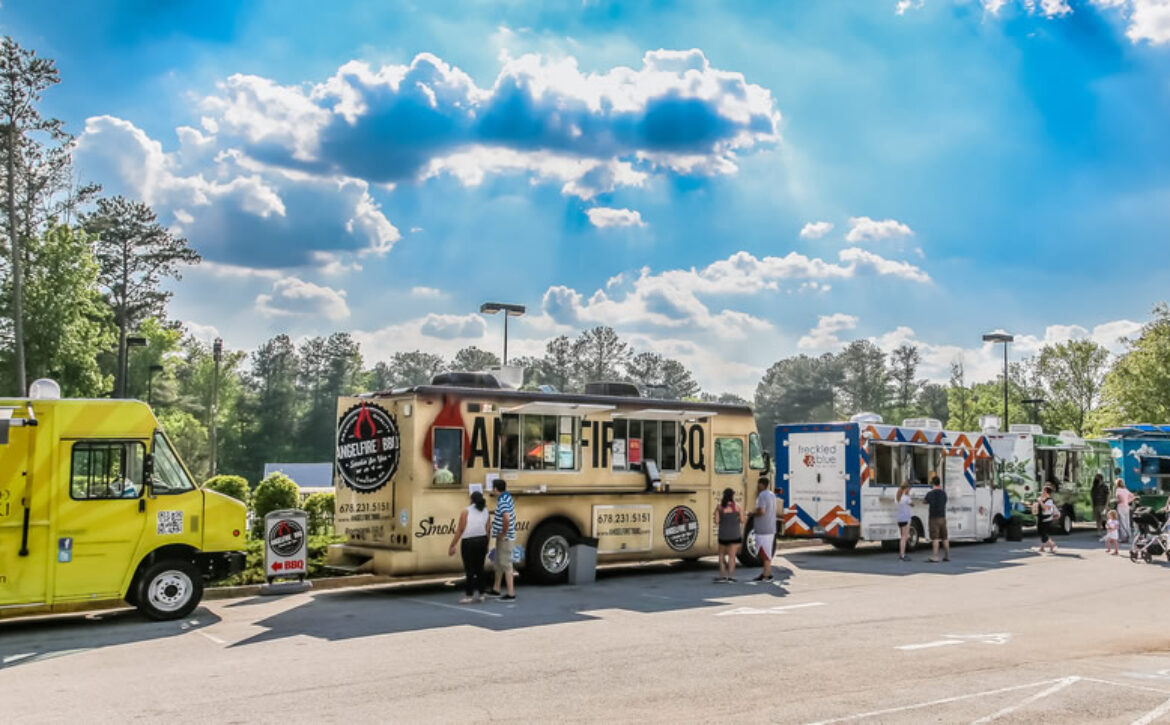
 Taking your family out for a quick bite from the best local food truck is something we’ve enjoyed ourselves over the years as no matter the season, we can always find our go-to stop.
Taking your family out for a quick bite from the best local food truck is something we’ve enjoyed ourselves over the years as no matter the season, we can always find our go-to stop.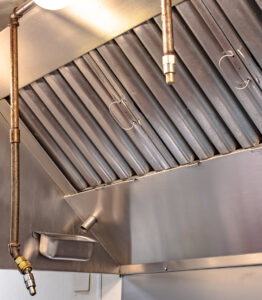 Food truck fire suppression systems when installed in your food truck are used to extinguish and contain fires when and if they happen. Fire suppressant chemicals are sprayed throughout the interior of the truck while the system also shuts off any electrical power coming to the area to avoid further combustion and damage. These systems not only help to protect the food truck, but also you, your employees and your valued customers from experiencing any harm while participating in your business.
Food truck fire suppression systems when installed in your food truck are used to extinguish and contain fires when and if they happen. Fire suppressant chemicals are sprayed throughout the interior of the truck while the system also shuts off any electrical power coming to the area to avoid further combustion and damage. These systems not only help to protect the food truck, but also you, your employees and your valued customers from experiencing any harm while participating in your business.
 To learn about how fire sprinklers are activated, it’s helpful to understand the way these systems are set up in homes or office buildings.
To learn about how fire sprinklers are activated, it’s helpful to understand the way these systems are set up in homes or office buildings.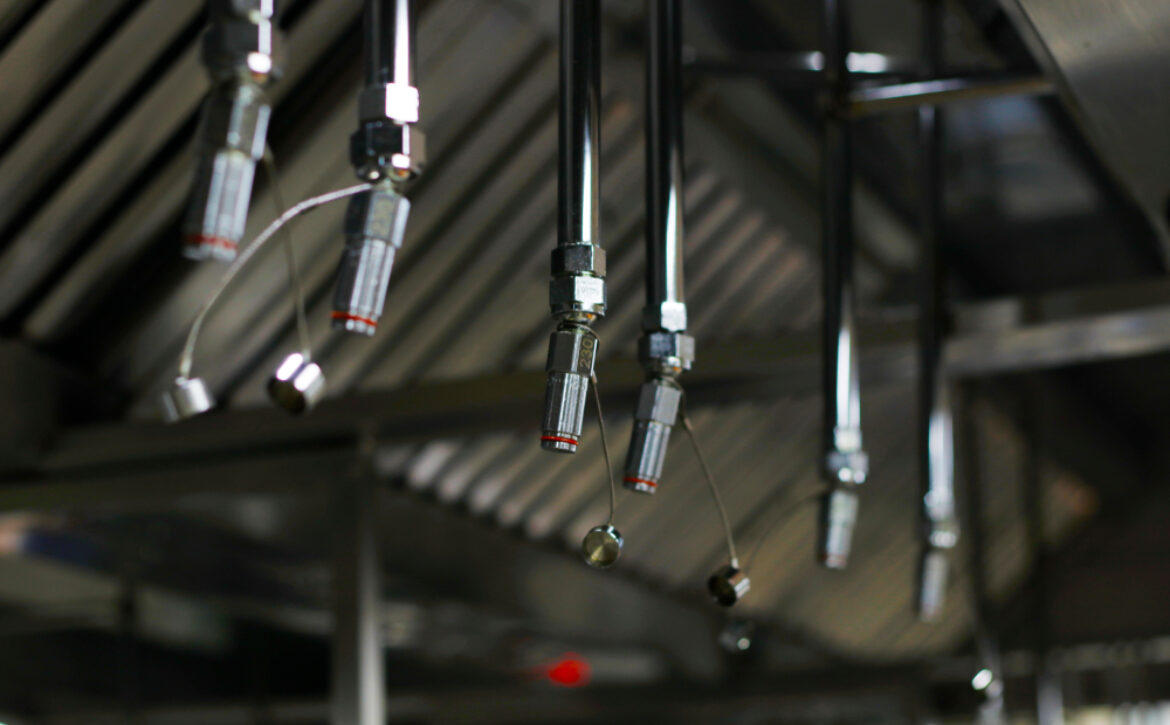
 Many fire suppression systems are built directly into an exhaust hood. These integrated builds require specific configurations to remain compliant with safety protocols. For instance, large flat surfaces require nozzles to be installed directly overhead. In contrast, enclosed or partially enclosed equipment requires nozzles are pointed directly inside the equipment.
Many fire suppression systems are built directly into an exhaust hood. These integrated builds require specific configurations to remain compliant with safety protocols. For instance, large flat surfaces require nozzles to be installed directly overhead. In contrast, enclosed or partially enclosed equipment requires nozzles are pointed directly inside the equipment.
 Various components make up a smoke detector, and the battery drawer is part of that architecture. It’s easy for this small mechanism to get dislodged or not shut entirely. Ensuring that the drawer is fully closed and latched will prevent the battery from disconnecting and causing the alarm to beep.
Various components make up a smoke detector, and the battery drawer is part of that architecture. It’s easy for this small mechanism to get dislodged or not shut entirely. Ensuring that the drawer is fully closed and latched will prevent the battery from disconnecting and causing the alarm to beep. Smoke detectors can be sensitive to the fluctuation of temperatures in a home or other building. Unusually high or low temperatures can cause an alarm to issue a beeping alert. Reasons for fluctuating temperatures can involve cooking in the kitchen, summer heat, a hot shower, or changing the thermostat. You can resolve these issues by moving alarms that are close to the kitchen or bathrooms or use other methods that reduce hot air from reaching the vents on your smoke detector.
Smoke detectors can be sensitive to the fluctuation of temperatures in a home or other building. Unusually high or low temperatures can cause an alarm to issue a beeping alert. Reasons for fluctuating temperatures can involve cooking in the kitchen, summer heat, a hot shower, or changing the thermostat. You can resolve these issues by moving alarms that are close to the kitchen or bathrooms or use other methods that reduce hot air from reaching the vents on your smoke detector.

 Instead of removing heat, inert gas systems decrease oxygen levels in areas where fires have started. Inert nitrogen and argon gas molecules dissolve oxygen molecules to prevent fires from being stoked by oxygen. Additionally, individual inert gas clean agent fire suppression systems are developed specifically to reduce oxygen to a predetermined level for maximum fire stoppage.
Instead of removing heat, inert gas systems decrease oxygen levels in areas where fires have started. Inert nitrogen and argon gas molecules dissolve oxygen molecules to prevent fires from being stoked by oxygen. Additionally, individual inert gas clean agent fire suppression systems are developed specifically to reduce oxygen to a predetermined level for maximum fire stoppage.
 In many cases, a distinction exists between fire suppression systems and fire protection systems. The two terms—suppression and protection—overlap in many regards. Some fire safety providers, however, may not distinguish between the terms at all. For the sake of our exploration, fire suppression systems differ from fire protection systems by their use of an alternative to the water used in more traditional fire sprinkler systems.
In many cases, a distinction exists between fire suppression systems and fire protection systems. The two terms—suppression and protection—overlap in many regards. Some fire safety providers, however, may not distinguish between the terms at all. For the sake of our exploration, fire suppression systems differ from fire protection systems by their use of an alternative to the water used in more traditional fire sprinkler systems.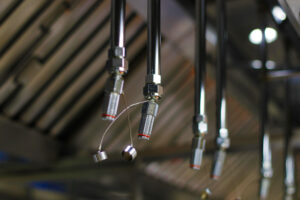

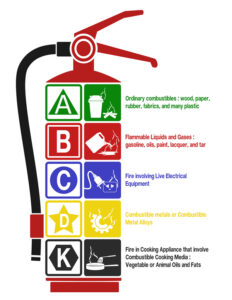 Can I Use a Class K Fire Extinguisher to Fight a class A Fire?
Can I Use a Class K Fire Extinguisher to Fight a class A Fire?